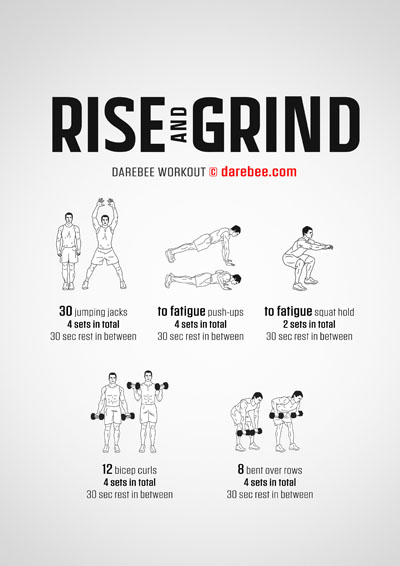
Personal trainers in Connecticut are a great option for those who have a passion about fitness and health. There are many options to get involved in this booming industry. One way is to start your own business. This can be done online and you can capitalize on the demand for Connecticut fitness instructors. Target the most populated parts of Connecticut to maximize exposure.
Employment outlook
Personal trainers are in good demand in Connecticut. However, there is some variation on salaries. Many boutique gyms are located in Connecticut and specialize in CrossFit. You also have traditional gyms which can cater to a wide range of clients but are more focused on fitness.
Personal trainers can help seniors and people who are trying to lose weight. Other people, such as athletes, may be interested in working with you. You could work at a gym, or you could own one. Either way, there are many opportunities to advance your career.

Salary range
There are many opportunities for personal trainers in Connecticut to expand your business. The state boasts one of the lowest obesity rates in the country, according to a study by the Trust for America's Health. Connecticut has a variety of personal trainers who can help people get in shape. The state's beautiful parks and natural scenery provide many opportunities for training.
The salary for personal trainers varies greatly depending on experience and how many clients you take on. A trainer with more experience and a full book of clients can earn more than $140,000 per year. Few personal trainers make it to the six-figure level.
Work environment
Connecticut has many options for certified personal trainers. According to the Trust for America's Health (Tax for America's Health), Connecticut has one among the lowest levels of obesity in America. Connecticut personal trainers are available to help clients who want to improve their physical health. Connecticut is an ideal place to train personal trainers regardless of your current situation.
Although the job environment for personal trainers in Connecticut is exciting and varied, there are some things that you need to remember. Knowing what to expect is essential if your goal is to teach and create one-on-1 fitness programs. Different fitness facilities require different types of instructors, so make sure to explore the class rotation schedule before accepting an offer.

Education requirements
If you are interested in becoming a personal trainer in Connecticut, there are several education requirements you must meet. You must first get your certification. The State of Connecticut requires that personal trainers be certified by a nationally recognized agency. This certification will prove valuable in the job search and will help you stand apart from other candidates.
CPR certification is required in addition to the certification. You may need to pass an exam for some certifications. Others may offer training. You can get a certification for teaching fitness classes if you are interested in yoga, CrossFit, high-intensity interval or high-intensity training.
FAQ
Which Is Most Important: Diet, Exercise, or Sleep?
This depends on what you're trying to achieve. Diet is key to losing weight. However, if you want to gain muscle mass, then exercise is the most important factor for building muscles. Because it affects your performance during the day, sleep is the most important factor.
Do I lose weight if I exercise?
Yes. Regular exercise will help you to lose weight by burning extra calories. Your metabolism will remain high, so you can continue to burn calories even though you're not exercising.
Do I need food before I exercise?
No. It doesn't matter what you eat before going to the gym. But if you're feeling hungry after exercising, you may be tempted to snack on light foods like yogurt or fruit.
What are resistance training exercises?
Resistance training involves using weights or other objects to perform specific movements. For example, lifting weights strengthens your arms, shoulders, chest, back, legs, and core. Resistance training helps build muscle mass and bone density. It also promotes overall strength.
Statistics
- Globally, 28% of adults aged 18 and over were not active enough in 2016 (men 23% and women 32%). (who.int)
- According to the Centers for Disease Control and Prevention, chronic diseases cause 7 out of 10 deaths in the U.S., and treating chronic diseases accounts for 86% of U.S. healthcare costs. (mana.md)
- One study showed that adults who watch more than 4 hours of television daily had an 80% higher risk of death from cardiovascular disease. (heart.org)
- An estimated 110,000 deaths per year could be prevented (cdc.gov)
External Links
How To
How to Lose Belly Fats More Fast
When trying to lose weight, belly fat is often viewed as a problem. When you stop and think about it, Belly Fat can actually be a blessing. It is the fat in your stomach that protects your organs. Let's find out how to lose belly fat quickly.
The two main factors that make us store body fat are stress and lack of exercise. Stress makes us feel hungry constantly because it stimulates the production of the cortisol hormone. Cortisol raises insulin levels. The insulin then stores extra calories as fat. Lack of sleep causes the release of adrenaline into our system, leading to increased appetite. These extra calories can be broken down by exercising.
There are many methods to lose belly fat. Any one of these can be tried, depending on how much you have to spend. These are some great tips to help you lose belly fat fast.
-
Try to eat less food. Eat smaller meals throughout the day rather than eating three big ones. This will result in fewer calories.
-
Drink plenty of water. Water flushes out toxins, and keeps your body hydrated. Drinking water prior to every meal will ensure that you are satisfied for longer periods of time and won't eat too much.
-
Avoid unhealthy snacks. If you're looking for quick fixes, snack foods like chips, cookies, candies, etc. This might be tempting. But avoid these fattening treats as they contain lots of empty calories and too much sugar. Choose healthy alternatives like fruits and vegetables, nuts, seeds, whole grains, and seeds.
-
At least three times per semaine, do strength training. Strength training builds muscle mass that burns more calories, even when it is done while you rest. Strengthening your bones, muscles as well ligaments, joints, tendons, heart and lungs.
-
Stretching and walking are good habits. Stretching increases flexibility and mobility. It also reduces back pain. Walking can help you burn calories.
-
Reduce alcohol intake. Alcohol adds empty calories to your diet and has no nutritional value whatsoever.
-
Slowly lose weight. Your current weight is the first step to losing weight. Add 5%-10% of your total bodyweight to calculate your ideal size. Once you have determined your ideal weight, you can start to reduce your calorie intake by 500-1000 calories per day until you reach it.
-
Avoid processed food. These foods contain high levels of sugar, salt, and preservatives. Even though they can be very convenient, these foods lack sufficient nutrients to support your health.
-
Don't skip breakfast! Breakfast improves concentration, memory, energy, and stamina. Breakfast should contain protein (like eggs), fibre (like oats), as well as complex carbohydrates (like oatmeal).
-
Have regular bowel movements. Bloating and gas can be caused by irregular bowel movements and constipation. Drink plenty of water to prevent gas and fiber ingestion.